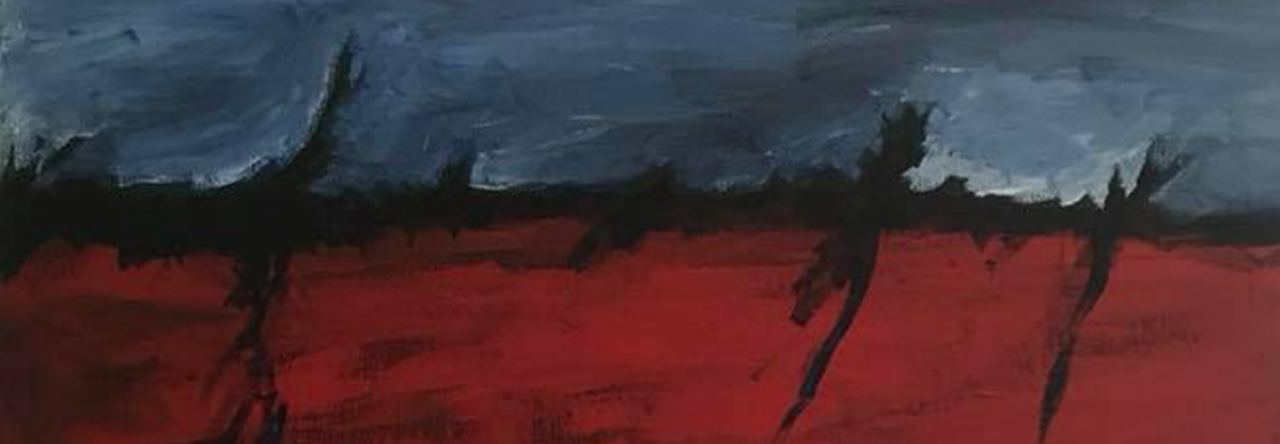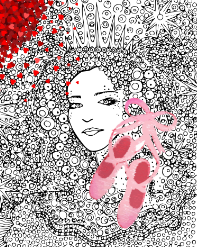This year, DANCE your way to Valentine’s Day! Novels based on fairytales and folktales featuring dance.
In preceding years (you can find all the posts archived on my blog, btw–just look for February!), I have posted novels based on worldwide fairytales and folk tales, and on two “literary” fairytales (Cinderella and Rapunzel). This year, I’m featuring a whole week of novels based on fairytales and folktales involving dance. Here are the posts:
Day One of Fairytale Fantasy Week: Entwined, by Heather Dixon–a novel based on the classic fairytale “The Twelve Dancing Princesses.” Find the review here.
Day Two: Midnight in Everwood, by M. A. Kuzniar–a novel based on the story behind the classic fairytale ballet, The Nutcracker. Find the review here.
Day Three: Valentine’s Day itself! The amazing fantasy novel Jonathan Strange & Mr. Norrell, by Susanna Clarke–a novel with a strong dancing subplot. ONE OF MY TWO FAVORITES. Find the review here.
Day Four: House of Salt and Sorrows, by Erin A. Craig–another novel based on “The Twelve Dancing Princesses.” Find the review here.
TODAY, Day Five: Dark Breaks the Dawn, by Sara B. Larson–a novel based on the fairytale ballet Swan Lake.
Day Six: Sexing the Cherry, by Jeanette Winterson–a final choice based on “The Twelve Dancing Princesses,” but be warned–it’s nothing like the others.
Day Seven: A wrap-up and a special exploration of the “dance mania” of the medieval period, plus a free download.
TODAY, a review of Dark Breaks the Dawn, by Sara B. Larson

Dark Breaks the Dawn (2017), by Sara B. Larson, published by Scholastic, is another YA novel based on a dance theme, in this case the ballet Swan Lake. Evelayne, princess of Éadrolan, has already lost one parent, her father, to the war that rages between the two kinds of Draíolon who inhabit the divided land of Lachalonia. Early in the book (so early I’m not going to say spoiler alert!), she loses her mother the queen, too, catapulting her to the throne when everyone regards her as too young and untested and untrained to face the warlike rival kingdom of Dorjhalon. Within Lacholonia, there are two kingdoms, the Light (Éadrolan, home of the light Draíolon) and the Dark (Dorjhalon, home of the dark Draíolon). Time out of mind, the two kingdoms have worked together to keep the balance of the land–summer and winter, day and night–until the dastardly king of Dorjhalon decided to grab all the power for himself. The story of the novel is Evelayne’s coming-of-age, coming into her own as queen and warrior, and also of her awakening love for the lovely, barky Lord Tanvir. As she fights to avenge her parents and save her land, she needs cunning, might, and ingenuity. She also needs to learn how to wield her special royal powers, accessed through a gemstone embedded in her body, as well as through shape-shifting into a ritually chosen creature–in Evelayne’s case, a swan. The twist at the end poses a dilemma: Evelayne’s very strengths might prove her undoing.
Swan Lake–the story of the ballet
First of all, as in years gone by, I should mention what I mean by “fairytale.” No fairies are necessarily involved. The term has evolved to refer to a particular magical type of folk tale that may involve fairies, princesses, and the like, but may not. (A subgenre of fantasy, involving the fae, is an entirely different matter). And sometimes, what readers have come to know as “fairytales” aren’t any such thing–not folklore, passed down anonymously through the generations and centuries, often by word of mouth, but literary creations by artists hoping to mimic the fairytale aura. I should also mention that my blog posts on this subject won’t refer to anything Disney, except in passing. The Disney take on fairytales occurs in a whole world of its own, it has its faithful fans, and I don’t intrude there.
Once more, a renowned Tchaikovsky ballet provides the underpinnings of a fantasy novel. I won’t say “backstory,” because the novel doesn’t really hew to the story of the ballet. Tchaikovsky supposedly used German and Russian folklore in constructing his story, although there is apparently no evidence of that. So once again we’re experiencing a “literary” fairytale–or in this case, I guess, a “choreographical” fairytale–perhaps inspired by a fairytale ethos and folkloric elements but not actually derived from folklore.
In the ballet, an evil sorcerer curses the beautiful Odette and her companions to be swans by day and only turn back into human form at night. Prince Siegfried, out hunting, observes this transformation and falls in love with Odette. The sorcerer snookers Siegfried into an engagement with his daughter Odile, whom he has enchanted to seem like Odette. When Siegfried realizes his mistake, he rushes to find Odette. She decides she’d rather die than stay a swan, and when she does, oh so romantically, Siegfried dies oh so romantically with her. The spell is broken, the other swans turn back into human women, and they watch ecstatically as Odette and Siegfried ascend to Heaven, together eternally.
Take a look at the ballet.
Except for the swan transformation, nothing of the plot of Tchaikovsky’s ballet features in Larson’s novel, and there’s absolutely no dancing. That left me scratching my head. Is the Swan Lake connection really just a marketing device? Yet Larson thanks a ballet studio owner in the novel’s dedication, so I guess we can say she is inspired by the Swan Lake story, even though she doesn’t overtly use much of it. Tchaikovsky had an affinity for fairytale subjects, so it’s no wonder that so many fantasy novelists have been charmed into using his work, in whatever way they choose to use it.
My thoughts on this book:
Of all the fantasy novels I’ve reviewed in this series of blog posts, Larson’s book is the most typical of the genre, especially for the YA readership. There’s the obligatory map at the beginning of the book. A good fantasy book has to have a map at the beginning, am I right? There are warriors wielding medieval weapons like swords and bows, and–this being fantasy, not historical fiction–magic spells. There are important battles. There are magical and/or enchanted creatures. There are tongue-twisty elvenish names. There’s a realm that does not exist in the ordinary world, and the idea of a Chosen One whose destiny is to save that realm. There are extremes of good and evil (or light and dark, in this case). In YA fantasy especially, there’s the spunky heroine, and her need to sort out her ambiguous feelings for a young man (or men). And in the subgenre of shifter fantasy, there’s some type of shift between human and beast-form. Larson’s fantasy novel sports all of these familiar tropes. I should also mention that this particular novel fits into the “high” or “epic” fantasy type, the “sword and sorcery” type (frequently seen together), and–with the shifter trope–dips a toe–just a toe–into paranormal romance.
What I liked: The writing, and the deft handling of the plot.
What I didn’t like as much: All those torturous names. And too many of them begin with the letter D! I kept having to flip back to earlier parts of the book, especially in the beginning, to make sure I knew who was who and what was what. I think this is really a legacy of Tolkien. Now, ever after, high fantasy books have to have these impossible names for everything and everyone. But remember that Tolkien, a trained philologist, thought up a hypothetical language (a hobby he had practiced for years), and then used that language to shape his novels, not the other way around. So the strange names emerge organically in Tolkien. I do think that naming is an important part of world-building, though, and I see how the author uses place names and names of people to further her world-building, which I mostly admire.
One aspect of this book I REALLY appreciated: There’s a twist at the end, but it’s no cheap-shot O. Henry-esque ending. The twist is earned. It grows naturally out of the story.
And a deal-breaker: In another book I’ve blogged about in this series, I admired the way the novel, a first book of a series, did not leave us hanging. There was no cliff-hanger. In this book, there is. Is there ever. We drop right off it. To me, this is a truth-in-advertising matter. I purchased a book, not a part of a book. A story, not a part of a story. If I’d wanted to pay for part of a story, I would have. If I’d wanted to live in the world of Dickens, spinning out his novels endlessly as newspaper serials, I would have time-traveled back there. Sure, if the book is one volume of a series, there might be loose threads and tantalizing hints at the end. (Or if you are especially skillful, and signal far enough ahead that you’re going to do it, you might be able to get away with it–witness Patrick Rothfuss’s The Name of the Wind. On the other hand, that commits you to going on. Witness the anger of his fans when he can’t seem to do that.) (Ugh, a parenthesis after a parenthesis, but–I’m not one of those angry fans. I’ll take whatever he can give us.) (And even The Name of the Wind ends with a pretty satisfying conclusion in spite of our knowing it’s just Day One of a three-day recounting of the hero’s adventures.) Larson’s book, though. It just. Stops. I can’t abide that. I will not read on.
Other readers may very well disagree. Some readers may like cliffhangers. I can’t imagine why. There are some interesting stories about cliffhangers, by the way. Tolkien famously sent The Lord of the Rings to his publisher as one enormously fat volume. The publishers figured it would never sell, so they arbitrarily chopped the book into three separate volumes to sell separately. That’s why the first two books stop so suddenly. The publishers didn’t think the three books would sell, even presented more neatly bite-sized. Were they surprised.
By contrast, T. H. White didn’t want The Once and Future King to be one enormously fat volume. He wanted three separate books. His publisher jammed them together. Go figure.
Two personal notes: I have a lot of sympathy for this writer in spite of my antipathy for cliffhangers. I write series of fantasy novels myself, and I always struggle about how to end them. Another cause for sympathy, and a little bit of trepidation: I’m writing my own swan story, nearly finished, so when I began reading this book, I got nervous I’d somehow inhale it and inadvertently copy some of it. Mine is different enough that I’m not nervous now. Mine is (VERY LOOSELY) based on the Children of Lir Irish legend, not on Swan Lake, and while I have transforming swans in mine too, they don’t transform in the same way or for the same reason as Larson’s swan does. Whew. The perils of the writing life. Oh, also–Larson has lots of readers, and I have few. So there’s that.
My experience buying this book:
I read this book through the iBook app on my iPad (actually called simply Book). Getting the book was absolutely a no-brainer, and the navigation and special features are great. I find reading ebooks this way to be a very satisfying experience. Purchasing through Amazon’s Kindle is just as easy, although not through its app, wherever you have installed it–tablet, desktop, phone, etc. Apple has arranged for its own e-reading app to be easy for users of its devices, and has made other e-reading experiences more difficult. I don’t like that. I guess, to Apple, it’s just business. But whatever, the iBook e-reading experience is great.


Pingback: Valentine Week, Day Six: Fairytale Fantasy – Fantastes
Pingback: Valentine Week, Day Seven: Fairytale Fantasy DELAYED! – Fantastes